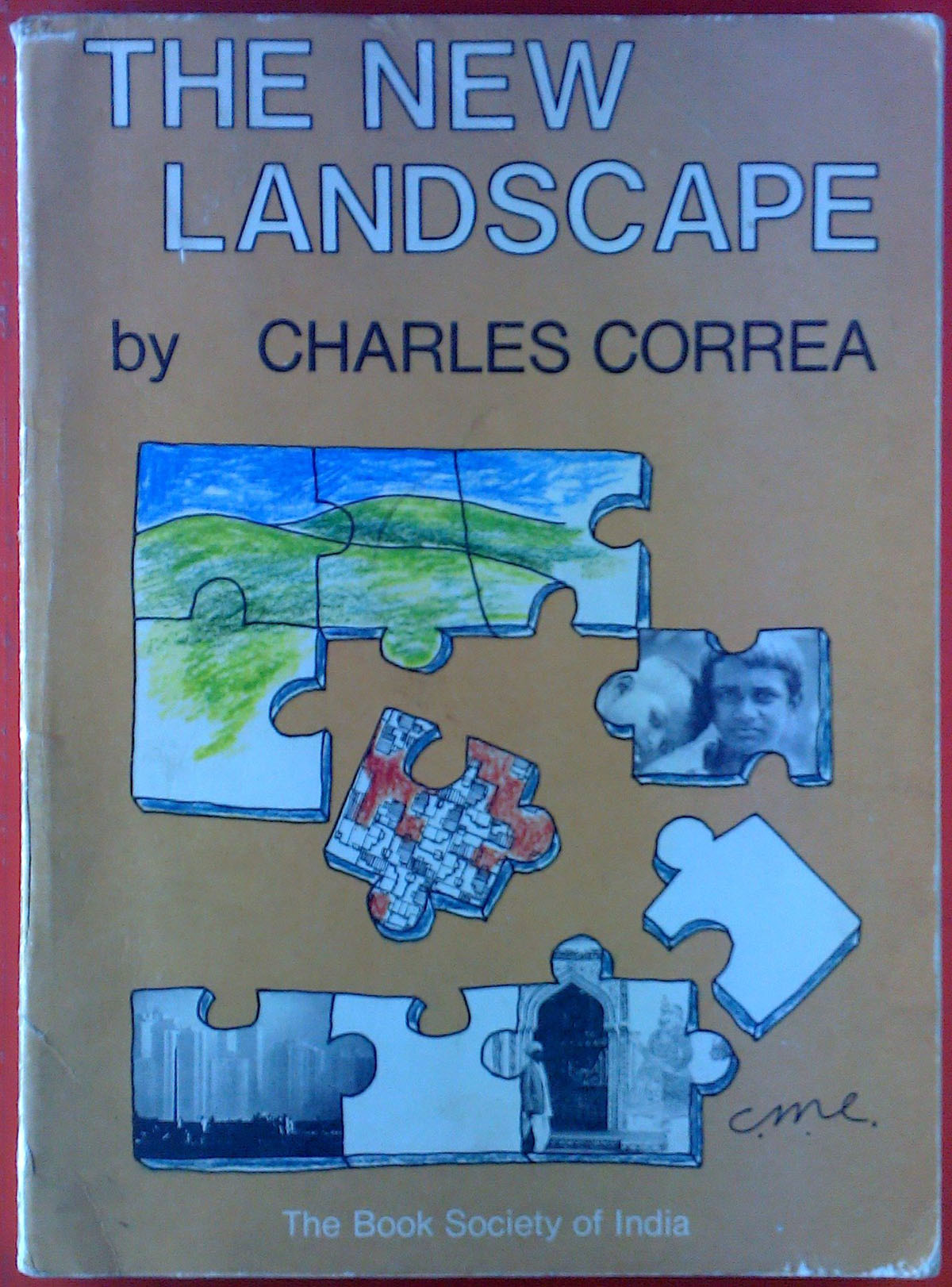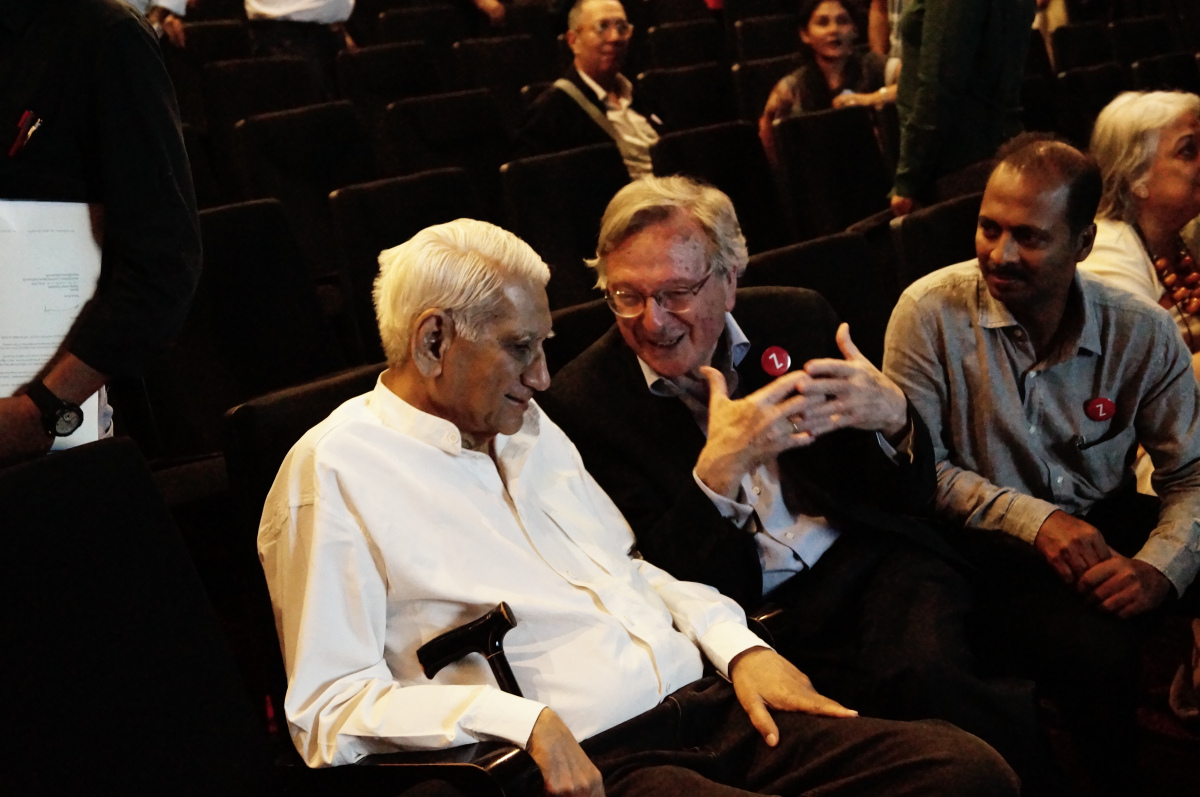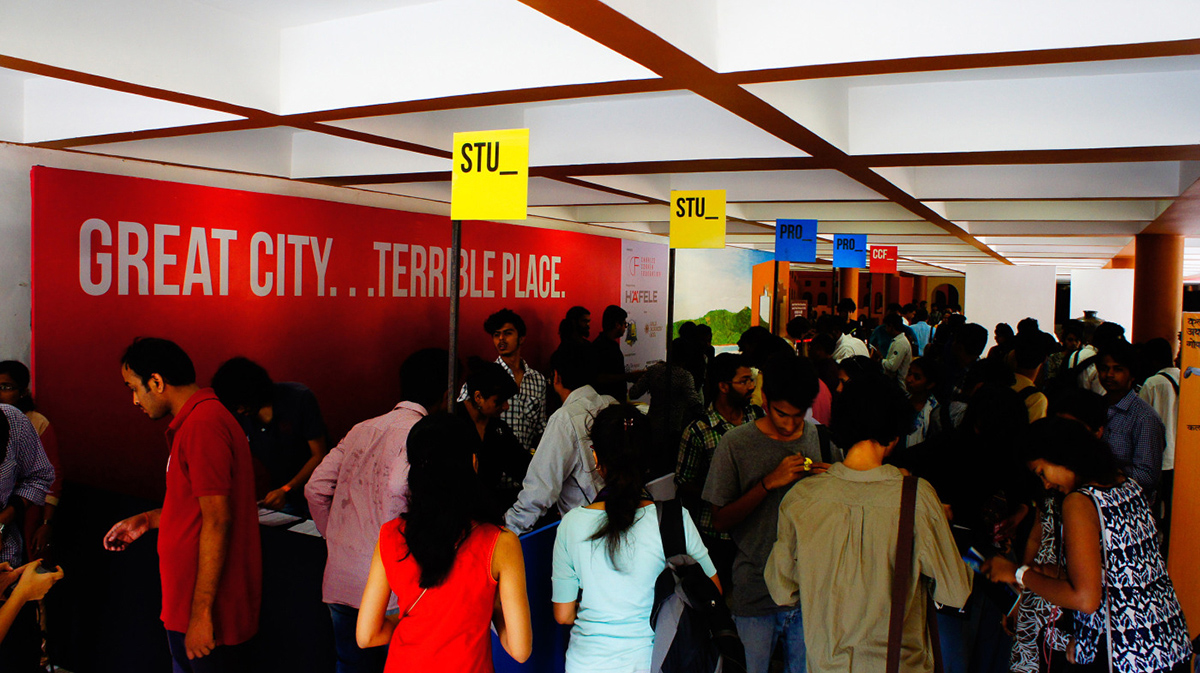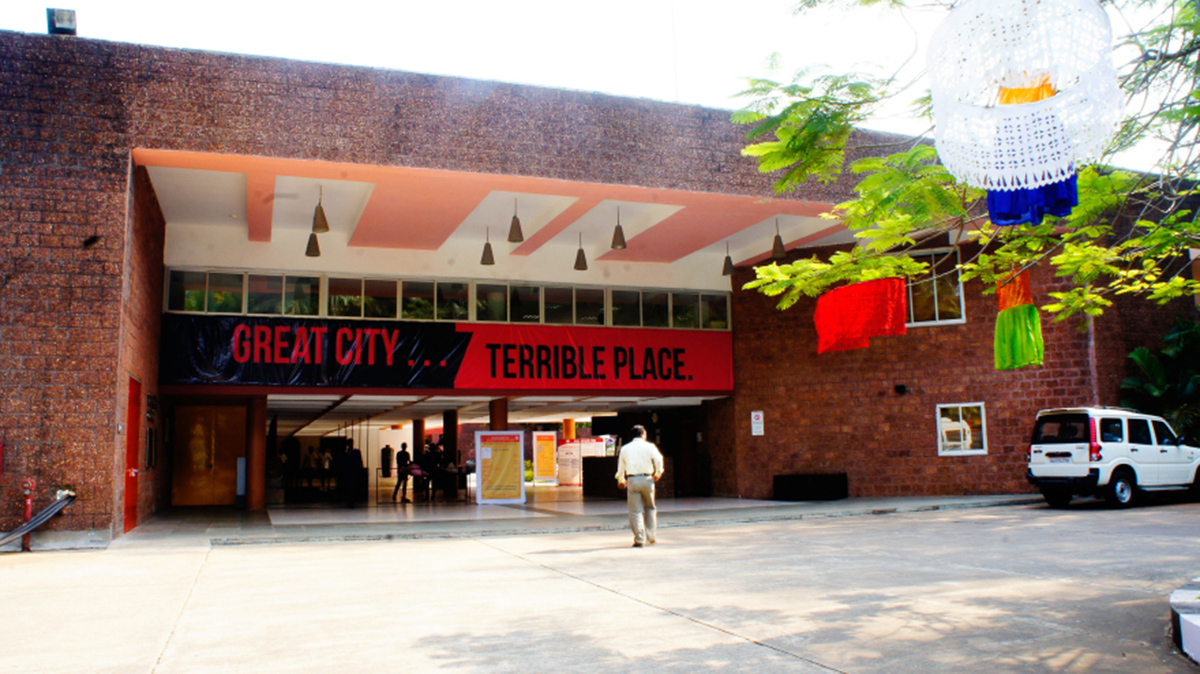Submitted by Tarun Bhasin
Recapitulating Z-Axis 2015 #1: Everything that is History and Prologue
India Architecture News - Nov 01, 2018 - 07:54 13385 views
Everything that is History and Prologue
Audience – “Good Evening! Thank you for the wonderful lecture. It is interesting that you put forward an idea that an architect must be connected to the city in which he resides, which is extremely interesting, but at the same time, is problematic due to the current forms of economics and politics that we are all a part of. So, how do you then suggest for the next generation of architects who will probably end up engaging with multiple cities? History played a great importance in your career and your understanding of architecture. Do you see an importance of an understanding of the history of several other cities that an architect would be engaging with, as a kind of key for such an engagement?”
Rafael Moneo – “I would like to find out, more clearly, your question. Would you be able to do it in a more understandable way for me?”
It was a long and complex question that demanded more simplification, even for the Pritzker Prize laureate Mr. Rafael Moneo, who delivered the opening lecture on the first day of the very first edition of Z-Axis held at Kala Academy, Panjim, Goa, in 2015.
It was, perhaps, one of the most pressing questions that encapsulated what entailed in the 3-day conference. To understand the implication of the response Mr. Moneo gave, one will have to understand why this conference was organised in the first place and what it aimed to achieve. It was also, in-turn, existential to the organiser of the event, Charles Correa Foundation (CCF), and its relatively short history, and was a direct reference to the elaborate legacy of its founding architect - Mr. Charles Correa.

Image: Book Cover, The New Landscape, courtesy of The Book Society of India
Over the course of his life, Mr. Correa wrote and published many seminal essays on Mumbai- the city he dearly loved and embraced throughout his career (-exactitude between him, Mr. Moneo and the question). His essay titled ‘Urbanisation’ beautifully summarizes the urbanisation trends in Mumbai that showed a decline in population growth of the city in the 80s, contrary to the media reports of that time. In reference to cities like Colombo, Karachi, and Kathmandu, he explains in the essay how urbanisation in India is geographically contained, dispersed and equitable throughout the country, contrary to the stated examples that establish a primacy within their respective countries.
His essay ‘Mobility’ that forms a part of ‘The New Landscape’ is aligned to his seminal essay that first appeared in Marg magazine in the 60s. Co-Authored with Shirish Patel and late Pravina Mehta, the essay was a literary breakthrough of the period that made a compelling case for altering the north-south traffic axis in Mumbai in favour of an east-west trajectory. Needless to say, it was this seminal proposal that paved way to the idea of Navi Mumbai, as part of a twin city, on the mainland across the harbour, which would, in time, come to absorb most of the development that was supposed to happen in Greater Mumbai, thereby averting the detrimental implosions in the city’s fabric and perhaps, its untimely decay.
But nothing could have sufficed a better theme for the first edition of the, supposed to be annual, conference other than Mr. Charles Correa’s seminal essay ‘Great City…Terrible Place’ that discusses cities as synergies, an eclectic juxtaposition of energies and interactions. The essay is passionate with a hint of sarcasm, insightful of myths and predictive warnings, and hopeful, but necessitating skepticism. It talks about the modern obsession of the ideas of cities as economic entities, as engines of growth and development, imagined to be places of economic activity or exercise of power, and place of residence for those engaged in these activities. It details a system’s thinking about how labour, resources, and capital, operate in different circuits and later switch into built environment, with successive folding from a village to a town and then to a city, in compulsive and irreversible movements that cause the natural environment to implode – leaving us with a situation that seems to worsen with each movement.
Highlighting the city as a concentration of power and decision-making in the hands of few, the essay also reveals the other essential precondition, one that reveals vision, sensibility and political will to deploy these resources to accommodate people without access to opportunities. By asserting this notion, Mr. Correa opens up a narrative on the existence of a city that is made possible by the informal economy – the separate circuit composed of a class of people that occupy parcels of land that are not suitable for human habitation because of environmental or infrastructural vulnerabilities. By doing so, he rejects the idea of the ‘city beautiful’, saying that it fails to provide that particular, ineffable quality of urbanity which we call: CITY. He deems the character of the city to its mythical and metaphysical imports, and the excitement, the interaction, the networking, the synergy of coming together of a kind of people who are ‘purple and blue amongst the majority of red’ – people, no longer agrarian, no longer reliant on land, and hence relying on socio-urban mobility in order to sell labour for a living.
The essay reveals his disdain for capital cities, such as New Delhi, which he terms as apparently misleading as they fail to accommodate the destitute and represent only the politicians and bureaucrats, who live there. His gaze then falls upon Chennai, once famed and fabled as the crown during the British colonial rule, and with a very dark undertone, reveals the silent decay the city underwent at its prime that went unnoticed, leading to a perpetual apathy to set in. This observation serves as a warning to his beloved Mumbai, which he compares to Mohenjodaro, Athens, Persepolis, Peking, Ishafan, and Rome – the unique indicators of the civilization of their times - ‘birthplaces of great music during rotten times’. Mr. Correa talks about the warning signs of the growing abysmal living-working conditions of the poor in Mumbai, and their struggle towards organisation and house-ownership, which has been subsidizing the city so far. ‘Yet, how long will this last? How long before the neglect, the piles of debris, the stinking garbage, take their toll-and the elan, the enthusiasm, of the citizens slowly disintegrates?’ He hints that as Mumbai incorporates these implosions, inequalities, narratives, and skills, to become better and better as a city, it is also steadily turning into a terrible place. Concluding with the wisdom that imprints of decay mature over a period of generations and thus, are hard to notice and act upon, until finally, the ethos of the city dissipates; he closes the essay on a sad but witty note equating the greatness of Mumbai as a CITY to ‘experiencing the last burst of energy – the spastic twitches before the end.’
But, why would anyone choose an essay that, although thoughtful, is greatly pessimistic, as the theme for the foundation deliberations on architecture, cities, and people; that are supposed to bring results for a better future? For that, one has to travel back a few decades in history and look at the key underpinnings of the architectural scene that was unfolding in India at the time, especially Mumbai.

Image: Opening Page, Great City... Terrible Place, A Place in the Shade, courtesy of Penguin Publications
From the 60s, the architecture of Mumbai was dominated by two schools of thought. The first school of thought, led by developers and builders saw the glass buildings of the West by Mies Van Der Rohe as the tabula rasa for modern India, later imbibing principles of post-modernism as it unfolded in the later decades. The second school of thought influenced much by modernist principles, imparted by Le Corbusier’s efforts in the Indian Sub-continent, primarily Chandigarh, created a contingent of critical thinkers who saw modernist buildings, not as physical entities but a way of looking into one’s surroundings. Having gained independence, there was an abject rejection of ideas purported by Victorian architecture or anything that was symbolic of British rule over India. Therefore, the second school of thought was deeply influenced by the culture of Indian villages and saw the images from some 200 years before the independence, as being the drivers of the architectural identity of Indian cities.
These efforts were, of course, in absentia of the patterns of rural-to-urban migration that were unfolding all over the world, that presented pragmatic challenges for urbanity, setting apart it's civic and built identity in complete contrast to whatever had existed before the time. Having begun his practice in India in the 60s, Mr. Charles Correa was not only observing the two schools of thoughts but slowly working towards his own. His rejection of glass buildings wasn’t reactionary in a sense, but a careful assessment of climate of the region that rendered glass buildings inhospitable, and his rejection of skyscrapers was reasoned by its poor sociability as well as high-embodied energy.
During the same time, he was critically examining the city he was working towards and trying to understand the ideas related to urbanity in general and in the context of India. Right from his works that incorporated the myths and symbols of ancient India, to creation of his own language of architecture, which then unfolded into creating a skyscraper with terraces and courtyards in 1983, Mr. Charles Correa headed the panel of National Commission of Urbanisation in 1988 that published voluminous reports, one after the other, credited for simplifying our understanding on trivial questions related to the patterns of growth in Indian cities. His endeavor with Mumbai was best revealed in his decade-long effort with the politicians, bankers, and developers, to craft a future for the 600 acres of textile mill lands which he saw as the city’s best chance at reinventing itself. The Machiavellian takeover and flattening out of this plan in the 90s by ‘a well-known politician and a well-known banker’ caused a massive set back to his cause towards bettering the city as a ‘place’. “Let the lobbies get their way on this land and Bombay (it had not been re-named then) will never ever be the same again”, he said in an interview with an angst that was indicative of the massive disappointment he felt at the time. He wasn’t prescient in the 90s and the beginning of 21st century.
In a manner, ‘Great city…terrible place’ emotionally encapsulates Mr. Charles Correa’s struggle to contribute to the life of the city he understood so well and is reminiscent of the failure to leave a lasting remark due to the existence of architecture as an externality to decision-making processes in the city. As a response to this struggle and lesson, more than a decade later, Charles Correa Foundation was conceived in 2011 in Panjim, Goa– a great place but a minuscule city in comparison to Mumbai. A not-for-profit organisation, the aim of the foundation is to leverage the innumerable number of ideas that exist with the citizens and private institutions of India. It serves to fill the absence of a body or support system in the country that incubates and scrutinizes initiatives pertaining to the development of places and cities and funds them. Mr. Christopher Herida, the Managing Trustee of the foundation, explained in the opening remarks of the conference that CCF has the objectives of initiating architecture, urban design and community projects, both built and natural, by means for providing fellowships to support individuals; conservation and adaptive re-use of heritage structures and precincts; facilitation of field studies, seminars, lectures and conferences; archiving drawings and maps to record heritage and contemporary architecture, and publishing them in the form of journals and articles.

Image: Mr. Charles Correa (Left), Mr. Rafael Moneo (Centre), Mr. Sanjit Rodrigues (Right), courtesy of Charles Correa Foundation, Panjim, 2015
To, establish a precedent of the role of architect in the development of the city, CCF began working with the Municipal Corporation of Panjim, along with the Municipal Commissioner Mr. Sanjit Rodrigues, who having held positions in the past relating to infrastructure, urban development, revenue, tourism and industries, understood what the Foundation was trying to achieve. CCF and Mr. Sanjit Rodriguez then worked on the restoration of Fontainhas, and later, on preparing a holistic master plan for the city of Panjim with an intent to make it a world-class city. The challenge was not to create just another city, as the world has been doing, but to curate it for people with people in mind. In the words of Mr. Sanjit Rodriguez, the exercise was to bring the top-down and bottom-up processes to make the city perform, create a change in the mindset of city managers to allow the cities to be planned and executed with a hands-on approach - ‘to create a city for people to live and not just to find a living’.
With this initiative, the tiny city of Panjim, changed its size into its biggest asset, and was able to delve into issues of - mobility, by shunning the idea of mindless flyovers and instead re-introducing waterways into the life of its citizens to decongest roadways; conservation of heritage in a manner that conserved the city image and protected commercial interest of individuals; adapting to climate change and sustainability, by mapping vulnerable areas and educating the residents to prepare them for future changes. Along with this, the visions of a smart city were incorporated by proper management and elimination of landfill sites, and distribution of smart lighting and solar energy. CCF showcased that architects were responsible for finding solutions in mundane things such as planning door-to-door waste collection and segregation, to create a city that does not generate waste at present.
With the Municipal Corporation of Panjim working closely with the Foundation on many initiatives and projects simultaneously, exploring new forms and vistas, and successfully revealing a transformation from an individual mindset of being to a participatory mindset of becoming, it was only obvious that when the Foundation decided to invite the world, and the field of architecture, into fresh deliberations, the city should also be a partner with the conference.
Hence, Z-Axis, serving as one of the objectives of CCF, is a conference that was conceived with the idea of forwarding a discourse on the role of architecture in the public domain, to move beyond, the now, simplistic arguments on form and function and evaluate the role of architecture and the architect in context to the people, time and place they serve. In the words of CCF, the name ‘Z-Axis’ appropriately refers to a departure from the two-dimensional view of architecture to discuss its role in the context of the city, by presenting its city of residence as being exemplary of the issues raised in the event. It is intended to be a platform to meet, interact and discuss concerns of contemporary architecture and urban design, to open up new pathways of approach.
Therefore, the theme of the very first edition of the conference was chosen on the basis of the seminal essay that beautifully surmises the unfolding of a series of events that are existential to its cause and everyone related to it. With this in mind, the Foundation invited practitioners and students from all over the country, but this time the city was not just a tourist destination, the city meant home to one of the most anticipated scenes in India to participate and learn. The structure of the conference could not have been made bigger – with the opening lecture by a Pritzker Prize laureate, lectures by many national and international architects, some well-known amongst the student community of India and some new, and thus, more intriguing, and finally a keynote session that was going to bring all of the Indian masters on one stage. It was Mr. Charles Correa calling – and just like that, practitioners and students packed their bags and headed to Goa, and I, a student of 3rd year of architecture at the time, who was just beginning to confront the role of architecture in the city – I was one of them!

Image courtesy of Charles Correa Foundation, Panjim, 2015
Top image courtesy of Charles Correa Foundation Archives, Panjim, 2015
*'Recapitulating Z-Axis 2015' is a six-part essay series made in collaboration with Charles Correa Foundation, to provide a first-hand narrative of the proceedings of the first edition of Z-Axis Conference held in 2015 at Kala Academy, Panjim, Goa, India.

